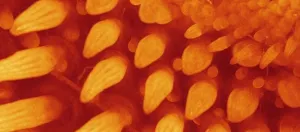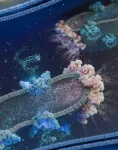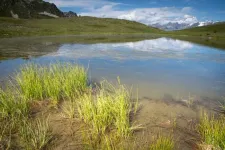(Press-News.org) Rising mountains do more than reshape the landscape – they also drive evolutionary change, according to a new study. By simulating millions of years of tectonic uplift, researchers have uncovered a link between mountain building and biodiversity, shedding light on how Earth’s dynamic topography shapes biodiversity over deep time. Mountain ranges are widely recognized as global hotspots of terrestrial biodiversity yet only cover a relatively small proportion of the Earth’s surface, suggesting a strong connection between topographic evolution and species diversity. Mountainous terrain can promote speciation by isolating populations, fostering genetic divergence, and enabling adaptive radiations across diverse ecological niches. Additionally, landscape changes driven by tectonics, climate, and river dynamics influence species distributions over time. However, the evolutionary mechanisms that drive the link between mountain uplift and topography on biodiversity are poorly understood. Using coupled landscape and biological models and a novel biologically simplified speciation algorithm, Eyal Marder and colleagues investigated how mountain-building processes alone shape biodiversity over geological timescales. Using the model, Marder et al. simulated various mountain-building scenarios over 20 million years to examine how species richness patterns responded to realistic tectonic uplift rates. They found that tectonic and geomorphological activity not only shapes species richness in high-elevation mountain regions but also leaves detectable imprints in adjacent lowland basins. According to the model’s findings, species richness increases in direct proportion to the magnitude and pace of mountain building, as well as the pace of topographic development, which are all influenced by tectonic rock uplift rates. Moreover, Marder et al. show that speciation lags the onset of mountain building, with species richness reaching equilibrium once topographic relief stabilizes. While erosional highlands foster higher species richness likely due to population isolation, species richness remains strongly correlated between highlands and lowlands, suggesting that lowland biodiversity dynamics mirror those in adjacent mountain ranges. According to the authors, the alignment between the model’s results and real-world biodiversity patterns highlights the significant role of topography and tectonics in shaping biodiversity.
END
Mountain uplift and dynamic topography shapes biodiversity over deep time
Summary author: Walter Beckwith
2025-03-20
ELSE PRESS RELEASES FROM THIS DATE:
Majority of carbon sequestered on land is locked in nonliving carbon reservoirs
2025-03-20
Challenging long-held assumptions about global terrestrial carbon storage, a new study finds that the majority of carbon dioxide (CO2) absorbed by ecosystems has been locked away in dead plant material, soils, and sediments, rather than living biomass, researchers report. These new insights, which suggest that terrestrial carbon stocks are more resilient and stable than previously appreciated, are crucial for shaping future climate mitigation strategies and optimizing carbon sequestration efforts. Recent studies have shown that terrestrial carbon stocks are increasing, offsetting ...
From dinosaurs to birds: the origins of feather formation
2025-03-20
Feathers are among the most complex cutaneous appendages in the animal kingdom. While their evolutionary origin has been widely debated, paleontological discoveries and developmental biology studies suggest that feathers evolved from simple structures known as proto-feathers. These primitive structures, composed of a single tubular filament, emerged around 200 million years ago in certain dinosaurs. Paleontologists continue to discuss the possibility of their even earlier presence in the common ancestor of dinosaurs and pterosaurs (the first flying vertebrates with membranous wings) around 240 million years ago.
Proto-feathers are ...
Why don’t we remember being a baby? New study provides clues
2025-03-20
Though we learn so much during our first years of life, we can’t, as adults, remember specific events from that time. Researchers have long believed we don’t hold onto these experiences because the part of the brain responsible for saving memories — the hippocampus — is still developing well into adolescence and just can’t encode memories in our earliest years. But new Yale research finds evidence that’s not the case.
In a study, Yale researchers showed infants ...
The cell’s powerhouses: Molecular machines enable efficient energy production
2025-03-20
Mitochondria are the powerhouses in our cells, producing the energy for all vital processes. Using cryo-electron tomography, researchers at the University of Basel, Switzerland, have now gained insight into the architecture of mitochondria at unprecedented resolution. They discovered that the proteins responsible for energy generation assemble into large “supercomplexes”, which play a crucial role in providing the cell’s energy.
Most living organisms on our planet-whether plants, animals, or ...
Most of the carbon sequestered on land is stored in soil and water
2025-03-20
Recent studies have shown that carbon stocks in terrestrial ecosystems are increasing, mitigating around 30% of the CO2 emissions linked to human activities. The overall value of carbon sinks on the earth's surface is fairly well known—as it can be deduced from the planet's total carbon balance anthropogenic emissions, the accumulation of carbon in the atmosphere and the ocean sinks—yet, researchers know very little about carbon distribution between the various terrestrial pools: living vegetation—mainly forests—and nonliving carbon pools—soil organic matter, sediments at the bottom of lakes and rivers, wetlands, ...
New US Academic Alliance for the IPCC opens critical nomination access
2025-03-20
WASHINGTON — The American Geophysical Union and the U.S. Academic Alliance for the IPCC today open calls for U.S. researchers to self-nominate as experts, authors and review editors for the Intergovernmental Panel on Climate Change Seventh Assessment Report through a new application portal. The IPCC nomination period opened in early March and will close in mid-April.
USAA-IPCC is a newly established network of U.S. academic institutions registered as observers with the IPCC. Both observer organizations and governments may nominate experts for ...
Breakthrough molecular movie reveals DNA’s unzipping mechanism with implications for viral and cancer treatments
2025-03-20
Scientists at the University of Leicester have captured the first detailed “molecular movie” showing DNA being unzipped at the atomic level – revealing how cells begin the crucial process of copying their genetic material.
The groundbreaking discovery, published in the prestigious journal Nature, could have far-reaching implications, helping us to understand how certain viruses and cancers replicate.
Using cutting edge cryo-electron microscopy, the team of scientists were able to visualise a helicase enzyme (nature’s DNA unzipping machine) in the process of unwinding DNA. DNA helicases are essential during DNA replication because ...
New function discovered for protein important in leukemia
2025-03-20
The protein (Exportin-1) is often found in high levels in patients with leukemia, other cancers
Protein was previously known to move materials out of a cell’s nucleus
New findings suggest protein may also stimulate transcription, which if hijacked, could contribute to abnormal cell division (cancer)
Future anti-cancer therapies that target Exportin-1’s role in transcription may be less toxic or more effective than current therapies
EVANSTON, Ill. --- Researchers from Northwestern University have stumbled upon a previously unobserved function of a protein found in the cell nuclei of all flora and fauna. In addition to exporting ...
Tiny component for record-breaking bandwidth
2025-03-20
Plasmonic modulators are tiny components that convert electrical signals into optical signals in order to transport them through optical fibres. A modulator of this kind had never managed to transmit data with a frequency of over a terahertz (over a trillion oscillations per second). Now, researchers from the group led by Jürg Leuthold, Professor of Photonics and Communications at ETH Zurich, have succeeded in doing just that. Previous modulators could only convert frequencies up to 100 or 200 gigahertz ...
In police recruitment efforts, humanizing officers can boost interest
2025-03-20
Many U.S. police departments face a serious recruiting and staffing crisis, which has spurred a re-examination of recruitment methods. In a new study, researchers drew on the field of intergroup communication to analyze how police are portrayed in recruitment materials to determine whether humanizing efforts make a difference. The study found that presenting officers in human terms boosted participants’ interest in policing as a career.
The study was conducted by researchers at the University of California Santa Barbara (UCSB), Texas State University (TXST), ...
LAST 30 PRESS RELEASES:
Injectable breast ‘implant’ offers alternative to traditional surgeries
Neuroscientists devise formulas to measure multilingualism
New prostate cancer trial seeks to reduce toxicity without sacrificing efficacy
Geometry shapes life
A CRISPR screen reveals many previously unrecognized genes required for brain development and a new neurodevelopmental disorder
Hot flush treatment has anti-breast cancer activity, study finds
Securing AI systems against growing cybersecurity threats
Longest observation of an active solar region
Why nail-biting, procrastination and other self-sabotaging behaviors are rooted in survival instincts
Regional variations in mechanical properties of porcine leptomeninges
Artificial empathy in therapy and healthcare: advancements in interpersonal interaction technologies
Why some brains switch gears more efficiently than others
UVA’s Jundong Li wins ICDM’S 2025 Tao Li Award for data mining, machine learning
UVA’s low-power, high-performance computer power player Mircea Stan earns National Academy of Inventors fellowship
Not playing by the rules: USU researcher explores filamentous algae dynamics in rivers
Do our body clocks influence our risk of dementia?
Anthropologists offer new evidence of bipedalism in long-debated fossil discovery
Safer receipt paper from wood
Dosage-sensitive genes suggest no whole-genome duplications in ancestral angiosperm
First ancient human herpesvirus genomes document their deep history with humans
Why Some Bacteria Survive Antibiotics and How to Stop Them - New study reveals that bacteria can survive antibiotic treatment through two fundamentally different “shutdown modes”
UCLA study links scar healing to dangerous placenta condition
CHANGE-seq-BE finds off-target changes in the genome from base editors
The Journal of Nuclear Medicine Ahead-of-Print Tip Sheet: January 2, 2026
Delayed or absent first dose of measles, mumps, and rubella vaccination
Trends in US preterm birth rates by household income and race and ethnicity
Study identifies potential biomarker linked to progression and brain inflammation in multiple sclerosis
Many mothers in Norway do not show up for postnatal check-ups
Researchers want to find out why quick clay is so unstable
Superradiant spins show teamwork at the quantum scale
[Press-News.org] Mountain uplift and dynamic topography shapes biodiversity over deep timeSummary author: Walter Beckwith




